TeleTales #101…Mrs. Write
TeleTales #101…Mrs. Write
Just for fun, here’s a look at cue cards being done for “Art Linkletter’s House Party” at Television City around 1956. Can you imagine having to make changes to this? Enjoy and share! -Bobby Ellerbee
TeleTales #100…When Your’e Hot, Your’e Hot!
TeleTales #100…When Your’e Hot, Your’e Hot! Television City
Here’s an RCA TK11 in cool down mode, on a “Playhouse 90” set at CBS Television City. As opposed to cameras at local stations, network cameras get a real work out. They are on for hours on end blocking shots and rehearsing. This one is mounted on a Houston Fearless Panoram Dolly. Enjoy and share! -Bobby Ellerbee
Happy Birthday, David Sarnoff! Born February 27, 1891
Happy Birthday, David Sarnoff! Born February 27, 1891
It is fitting, that on the eve of my release of The History Of NBC’s New York Studios presentation, we celebrate the 124th birthday of the man who started it all.
Love him, or hate him, he made history and brought the art of seeing at a distance, tele – vision, into something real. From Vladimir Zworykin to Pat Weaver, Sarnoff had a gift for finding the right people at the right time to lead RCA and NBC.
Although Weaver called him “General Fangs”, even he, grudgingly admitted that Sarnoff was a visionary. Below is a photo of David Sarnoff with his mentor, Guglielmo Marconi in 1918. By this time, he managing the commercial international wireless business of American Marconi in New York. The next year, he would become General Manager of the new GE subsidiary, The Radio Corporation of America.
Tomorrow, you can read the full history of Sarnoff’s efforts, and RCA’s creation in the introductory section of Volume 1 of The History Of NBC’s New York Studios. On Sunday, I will post Volume 2. Those will be the only posts over the weekend, but I think you’ll have plenty to digest as the full report is 200 pages and among the hundred or so photos has about 40 or 50 links to rare video clips.
Happy Birthday General! Enjoy and share! -Bobby Ellerbee
TeleTales #95…Ooh Lala! Television With A French Twist
TeleTales #95…Ooh Lala! Television With A French Twist
This is the first Thomson camera model ever made and it’s quite interesting. I has two cables, I think the one on the left is the power line and may be connected to the CCU and power supply box, which may be as the base of the pedestal, like the old Dumont set up. The right one is probably the video out.
Under the padded viewfinder hood, two points of interest, the talk back mic and a T handle for focus control. The big crank handle on the right is to rack the lens turret. This camera’s output was 819 lines and was built for RTG Television Service around 1950, which is now TF1. Enjoy and share! -Bobby Ellerbee
TeleTales #94…”Family Feud”, ABC Hollywood
TeleTales #94…”Family Feud”, ABC Hollywood
From Donna Quante, who used to operate one of the two Chapman Sidewinders in this picture, here is a shot of the studio with Gene Wood doing the audience warm up at the lower right.
This show used five Ikegami cameras, and all the operators wore jackets and sweaters daily, because Richard Dawson insisted the studio be cold enough to hang meet. Enjoy and share! -Bobby Ellerbee
TeleTales #93…You Mean It Wasn’t A Real Hotel?
TeleTales #93…You Mean It Wasn’t A Real Hotel?
Did you know that “Petticoat Junction”, created by Paul Henning, was based on the stories told him by his wife Ruth, who had spent summers at a small hotel located near the train station in Eldon, Missouri?
Speaking of Missouri, that’s where Henning was raised, and on a camping trip near Branson, he wrote the Ballad Of Jed Clampett, and came up with the idea of “The Beverly Hillbillies”.
Henning also wrote for Fibber McGee And Molly, George Burns and Gracie Allen, Dennis Day, “The Real McCoys” and “The Andy Griffith Show”. The first show he created was the 1955 hit, “The Bob Cummings Show”. If you ever wondered if the Linda Henning that played Betty Jo Bradley was related to Paul, the answer is yes…she was his daughter.
After interviewing 1,500 women for the parts of the three sisters, he could only pick two. That’s when Bea Benaderet recommended Linda for the part of the oldest sister. Enjoy and share! -Bobby Ellerbee
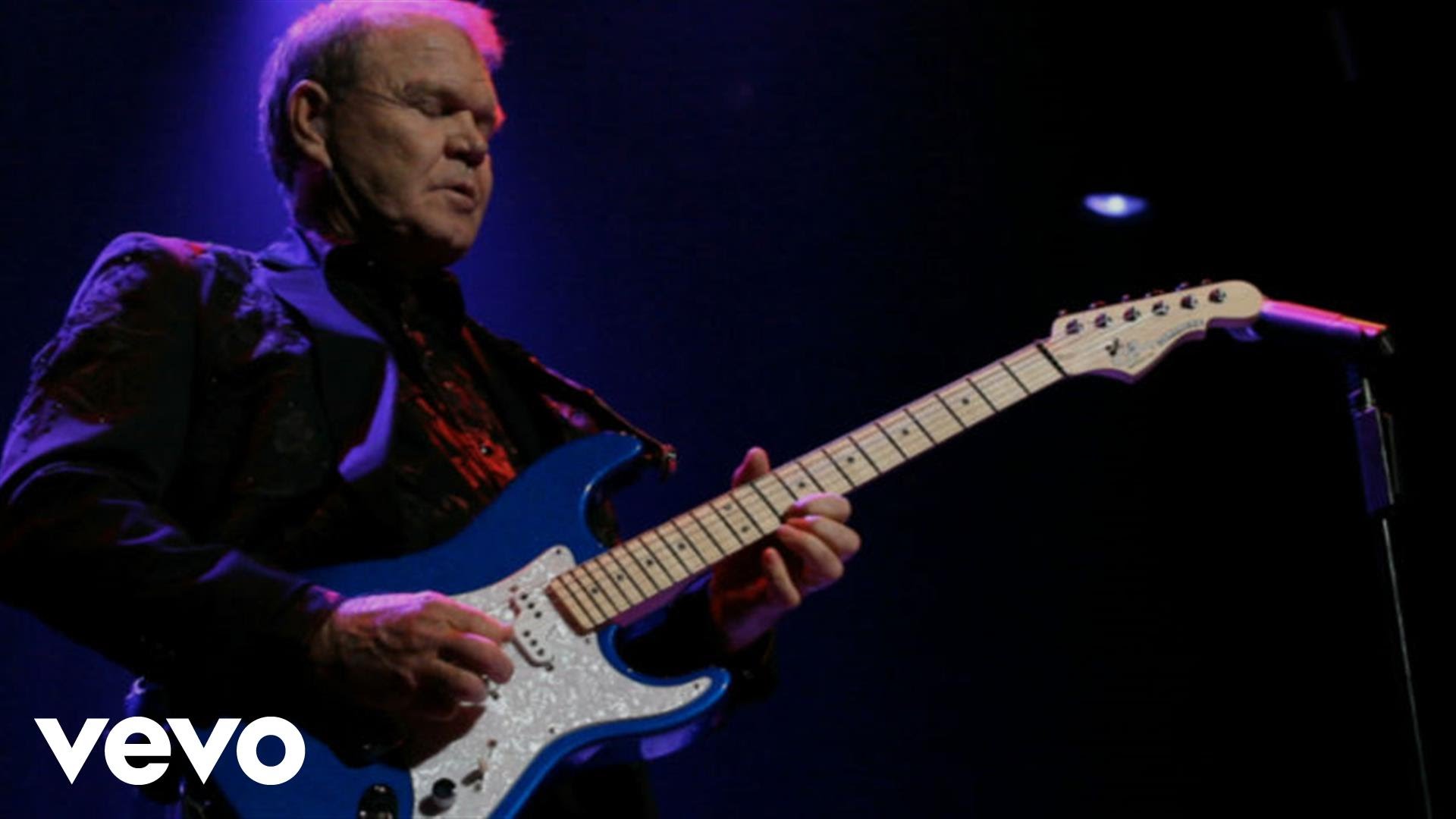

Now For Something Completely Different…And Poignant
Now For Something Completely Different…And Poignant
Among the surprises in Sunday’s Academy Awards show was Lady Gaga’s great “Sound Of Music” medley, and Tim McGraw singing what is in essence, Glenn Campbell’s good bye song to his family and the world.
Glenn was diagnosed with Alzheimers in 2011 and has been slowly slipping away into one of the cruelest of all maladies. I hope you’ll listen closely to the lyrics and enjoy the video of a true great and his travels through this fragile life. Enjoy and share! -Bobby Ellerbee
https://www.youtube.com/watch?v=U8TsAh-zYFI
Music video by Glen Campbell performing I’m Not Gonna Miss You. (C) 2014 Big Machine Records, LLC.
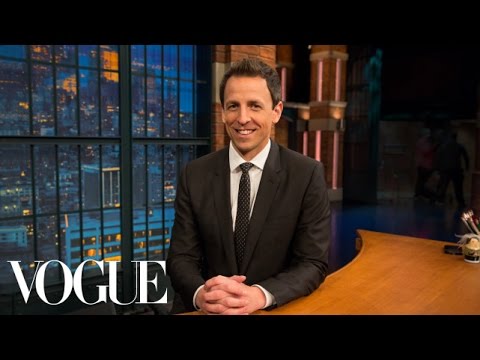

TeleTales #92…A Tour Of NBC Studio 8G With Seth Meyers
TeleTales #92…A Tour Of NBC Studio 8G With Seth Meyers
Ever wonder what the backstage area of historic 8G looks like? We are about to find out in this roving interview with Seth. Thanks to NBC Q card king Wally Feresten for sharing this, and we’ll see Wally in the middle and at the end. His company makes all the Q card for all the NBC shows in NY and LA.
This is where our friends Bob Friend, Bryan Durr, Mike Knarre and Mike Zecca work. Hi guys! Keep up the good work! Enjoy and share! -Bobby Ellerbee
#t=24″ target=”_blank”>https://www.youtube.com/watch?v=3W7nXg55mWw #t=24
Seth Meyers takes us on a tour of Studio 8G in the latest installment of 73 Questions. The Late Night with Seth Myers host shares what it was like being head…
February 25, 1940…Television’s First Hockey Game, NBC
February 25, 1940…Television’s First Hockey Game, NBC
75 years ago today, hockey came to television on experimental station, W2XBS; Channel 1 in New York City. There was only one camera there to cover the action, but cover it they did.
That night at Madison Square Gardens, the New York Rangers took on the Montreal Canadians. The Rangers won, 6 -2.
The 1939–40 New York Rangers season was the 14th season for the team in the National Hockey League. With new coach Frank Boucher the Rangers finish in 2nd Place again with an impressive 27–11–10 record. In the semi-finals the Rangers beat the Boston Bruins in 6 games to advance to the 1940 Stanley Cup Finals.
In the finals the Rangers win their first 2 games by scores of 2–1 and 6–2 at the Garden, before finishing the series on the road because of the circus. After dropping the first 2 games in Toronto the Rangers won a critical Game five 2–1 in overtime on Muzz Patrick’s overtime goal. In Game 6 it would take overtime again as the Rangers won their 3rd Stanley Cup on Bryan Hextall’s goal 2:33 into OT. Following the season the Rangers would celebrate buying out their lease at Madison Square Garden by burning the lease in the historic Stanley Cup, a move that would take on greater mystery in coming years.Enjoy and share! -Bobby Ellerbee
TeleTales #91…Television’s First “Live Animated” Commercial?
TeleTales #91…Television’s First “Live Animated” Commercial?
Take a close look at these three amazing photos from early 1947. Live from NBC Studio 3H, we see a Bulova Watch commercial board with a Rube Goldberg type scene with gears and gizmos that move when cranked from behind.
Notice at the top, the scroll window for copy that also crawls up to announce the birth of the new 21 jewel movement.
Here is a surprise for you. In doing the research for the big NBC Studio project, which I’ll roll out this weekend, I found out that when Howdy Doody debuted from 3H on December 27, 1947, these big silver Iconoscope cameras were still in use!
Our friend Frank Merklein started with NBC March 8, 1948 and just a few weeks into his new job, he was sent to 3H to to fill in for a sick cameraman and got a crash course in using these. By April, three new RCA TK30s were installed and the Iconoscope cameras were finally retired. By the way, Frank stayed on the Doody crew till the last show in 1960. Enjoy and share! -Bobby Ellerbee
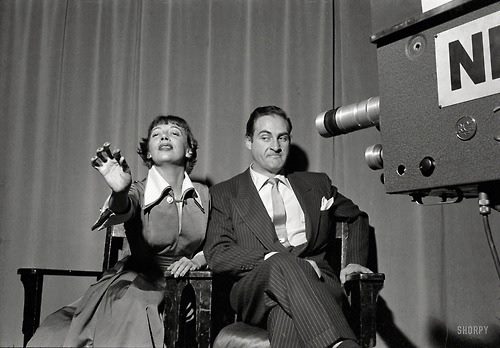

February 25, 1950…”Your Show Of Shows” Debuts On NBC!
February 25, 1950…”Your Show Of Shows” Debuts On NBC!
“YSOS” debuted as part of a two and a half hour block that was called “Saturday Night Review.” The first hour, was “The Jack Carter Show,” live from WMAQ in Chicago and was a comedy and variety affair airing at 8 Eastern.
At 9, ninety minutes of fun on YSOS hit the air and was followed at 10:30 by “Your Hit Parade”. Jack Carter’s show was replaced the next year by “The All Star Review.” This two and a half hour block was the first time Pat Weaver’s “participating sponsor” plan was used, which gave us the now famous phrase; “Brought to you in part by _____,”
The show debuted from NBC’s first theater converted to television, The International at 5 Columbus Circle. YSOS was actually a carryover from a 1949 show that had been so popular, it was canceled!?!? What? It’s true!
“The Admiral Broadway Revue” was the start of one of television’s greatest early comedy teams…Sid Caesar and Imogene Coca, with the great Max Liebman producing. The show had great ratings but unbelievably, Admiral (who “owned” the show) ended it in May of ’49. It seems that the show generated sales of Admiral TV sets that were far beyond their capacity to manufacture them. Admiral had to either end the show or build a new plant.
Since they owned the show, it could not continue with another sponsor and they would not sell it. Such were the sponsorship problems of the early days of television. Soon after this, NBC Vice President Pat Weaver would solve this problem by having the network own the shows and sell spots to sponsors. He is the man that brought magazine style ad sales to radio and television, which spread the cost of production among several advertisers.
On February 25, 1950, four of The International’s brightest years started with the debut of “Your Show Of Shows,” Caesar and Coca were back with a cast of writers that have become the “who’s who” of comedy including Mel Brooks, Carl Reiner and more.
February 25, 1928…Television’s “First License” Issued: Sort Of
February 25, 1928…Television’s “First License” Issued: Sort Of…
Charles Francis Jenkins invented a mechanical television system called “radiovision” and transmitted the earliest moving silhouette images on June 14, 1925.
At the time, there was no Federal Communications Commission, or even it’s forerunner, the Federal Radio Commission, so Jenkins applied to the Department Of Commerce for a six month experimental license in July of 1926.
By 1927, the FRC had been established and the first experimental TV license they issued was to GE’s W2XB in Schenectady on January 13, 1928. Shortly after, Jenkins applied for another experimental license and it was issued February 25, 1928.
In a nut shell, Jenkins had the second experimental license from the FRC, but the first government granted experimental television license. Below is a photo of Jenkins televising his “Shadowgraphs” presentation at his Washington DC offices.
The reason he chose silhouettes was because resolution was so low, that was about the only detail you could see on the tiny inch and a half screen. -Bobby Ellerbee
February 25, 1945…Johnny Olson’s First Television Job?
February 25, 1945…Johnny Olson’s First Television Job?
In this rare newspaper ad from Maureen Carney, a mystery blooms on the 70th anniversary of a local television version of the Blue Network’s “Ladies Be Seated” radio program.
In 1944, Olson became the host of the ABC Blue Network’s “Ladies Be Seated”, afternoon radio game show. That was his first New York radio job. As for his television carrier, most sources site his first TV job as the announcer of “Name That Tune” in 1958.
In 1943, NBC had divested itself of the Blue Network and it was now owned by Richard J. Nobles, who also owned the Life Savers Candy Company. WRGB was the GE owned television station in Schenectady, New York and it seems that for a number of Sunday nights, the had Olsen come up and host a local version.
Our friend Randy West wrote a book on Johnny and hopefully when this post reaches him in California, he’ll have something to add. Enjoy and share! -Bobby Ellerbee
TeleTales #90…The Real Beauty Of The RCA TK30
TeleTales #90…The Real Beauty Of The RCA TK30
Notice the lighting in this 1948 photo from WDAF in Kansas City. When the TK30, the first Image Orthicon camera debuted in 1946, it brought with it several new advantages. One of which was the ability to shoot with 10X less light than the Iconoscope cameras.
With only 250 foot-candles, vs 2,500, studios would be a lot cooler. The IO image was a lot sharper too and for the first time, television cameras had a turret of lenses that allowed each camera to give four different views of each single scene, depending on which of the four lenses was chosen.
The TK30’s, chrome trimmed sister was the TK10 which, except for the decorative chassis with a red stripe at the top and a glossy paint job, was exactly the same camera, yet the TK30 was deemed a “Field” camera while the TK10 was designated a “Studio” camera. The reason for this was that the TK30 could operate in the filed with less power, but could also be operated in the studio with a TK10 power supply. Even the viewfinders were interchangeable.
I never understood why RCA never made a movable viewfinder hood for the TK30, where they needed it most. The TK10’s hood was movable, but would not fit on the TK30. Enjoy and share. -Bobby Ellerbee
TeleTales #90…Living On Tulsa Time: KOTV
TeleTales #90…Living On Tulsa Time: KOTV
In October of 1949, KOTV became Oklahoma’s second television station and claimed to have the largest studios in the US, which were built in a former Intentional Harvester dealership.
This photo from 1952 shows that, even though they didn’t have pedestals for their RCA TK30s, they did have the brand new RCA Electra Zoom lens, which debuted with the “Today” show at NBC.
Enjoy and share. -Bobby Ellerbee
TeleTales #89…The Early Days Of WMAR, Baltimore
TeleTales #89…The Early Days Of WMAR, Baltimore
These are the new WMAR mobile units in 1948, shortly after they became the third CBS Television affiliate. Up till then, CBS only had WCBS in New York and WCAU in Philadelphia. By comparison, NBC had at least six affiliates, and by the end of the year would have eleven.
WMAR was the eleventh licensed station in the country, and went on the air in ’47. They spent a year as an independent station because at the time, they did not know if they would be included in the Washington DC metro area or if Baltimore would become it’s own metro market. In early ’48 the FCC declared Baltimore a separate market area. The vans and TK30s are from RCA. Enjoy and share. -Bobby Ellerbee
TeleTales #88…You Know What They Say About Necessity!
TeleTales #88…You Know What They Say About Necessity!
It is indeed the mother of invention. When you need a crane, but can’t get one to you location, build one out of wood. I have no idea where,or what is shoot is, but offer a tip of the hat to an innovative crew. “Get ‘er done!”. Enjoy and share! -Bobby Ellerbee
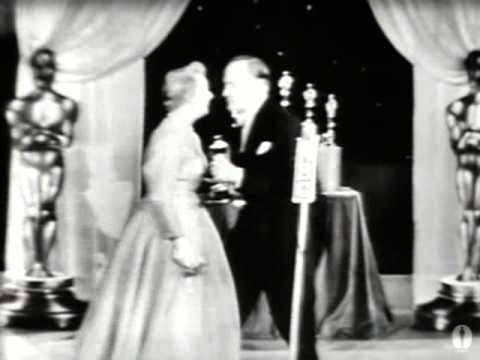

TeleTales #86…The First Televised Oscars And “Gown Trip”
TeleTales #86…The First Televised Oscars And “Gown Trip”
The 25th Academy Awards ceremony was held on March 19, 1953. It took place at the RKO Pantages Theater in Hollywood and at the NBC International Theater in New York. It was the first Academy Awards ceremony to be televised, and the first ceremony to be held in Hollywood and New York City simultaneously. The New York ceremonies were held in NBC’s International Theater, which was then home to “Your Show Of Shows.”
In the short clip below, we see Shirley Booth accepting the best actress award for “Come Back Little Sheba” at the International with cuts back and forth from Hollywood. There’s a quick glimpse of one of the cameras as she exits the stage. Her ascent to the stage is without a doubt the first televised “gown trip.” She is a true pioneer!
http://www.youtube.com/watch?v=xcBMpusmlkw
Ronald Colman presenting Shirley Booth with the Oscar® for Best Actress for her performance in “Come Back, Little Sheba” at the 25th Academy Awards® in 1953….
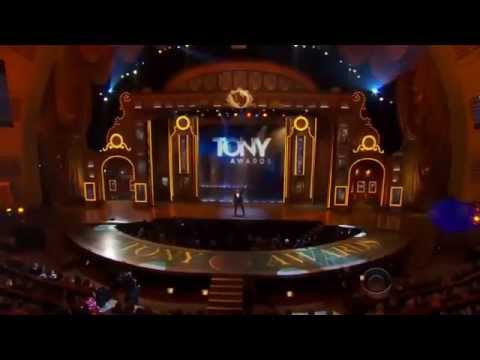

TeleTales #84…Tore Livia’s Fantastic Single Steadicam Shot
TeleTales #84…Tore Livia’s Fantastic Single Steadicam Shot
As I mentioned in today’s first post, Tore was the man that shot last year’s incredible Tony Awards opening with host Hugh Jackman hopping all over Radio City Music Hall. Here it is again. Tore picks up the shot outside and holds it flawlessly for 4 minutes that took them all over the building. You can see Tore in the elevator with Jackman and Neil Patrick Harris at around 2:20.
Last night’s Oscars show didn’t offer the same challenges, but in a world of robocams, it’s nice to see and salute great camera work like this. Enjoy and share! -Bobby Ellerbee
http://www.youtube.com/watch?v=NKTlTsQgy5w
Hugh Jackman, a practitioner of Transcendental Meditation, hopping at Tony Awards Opening 2014. Hugh and the David Lynch Foundation http://www.tm.org/blog/pe…
Time-lapse…Building The Oscars Red Carpet Area
Time-lapse…Building The Oscars Red Carpet Area